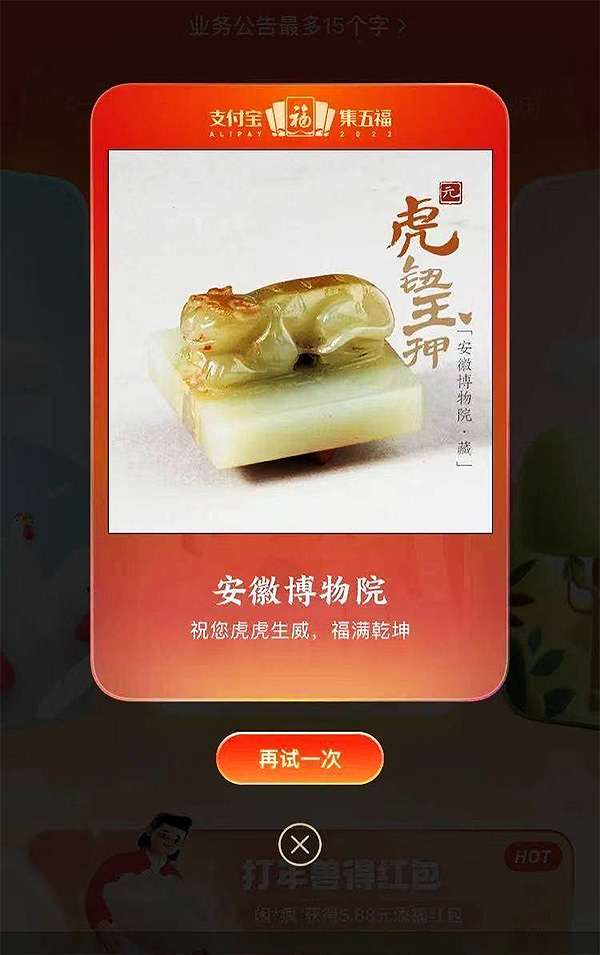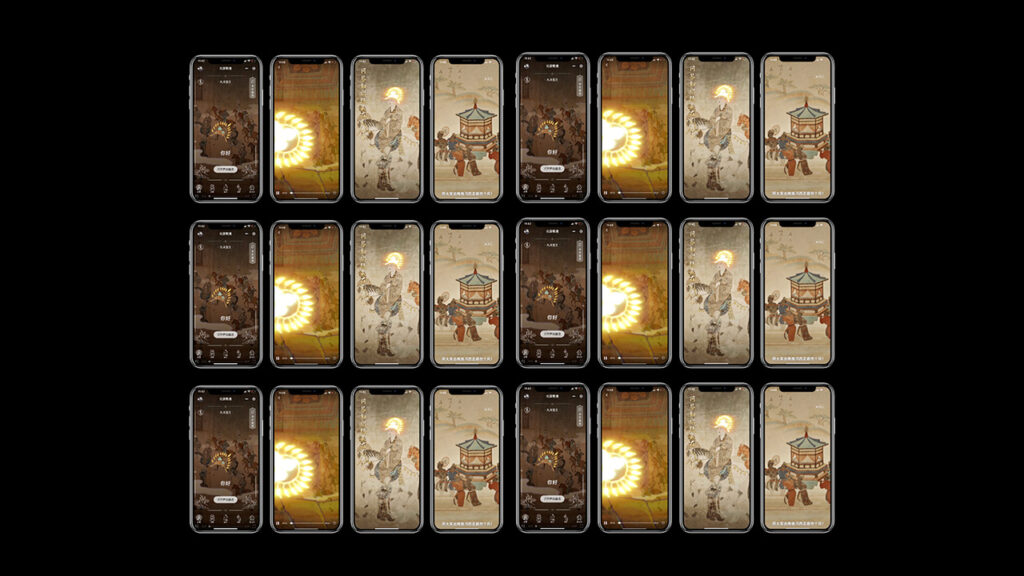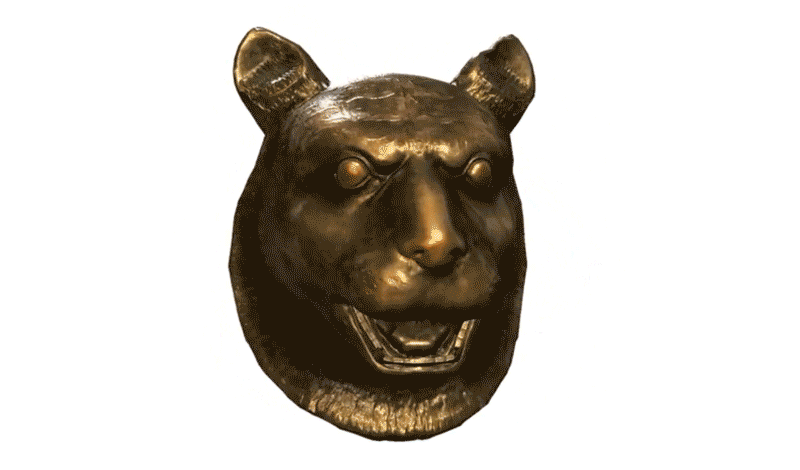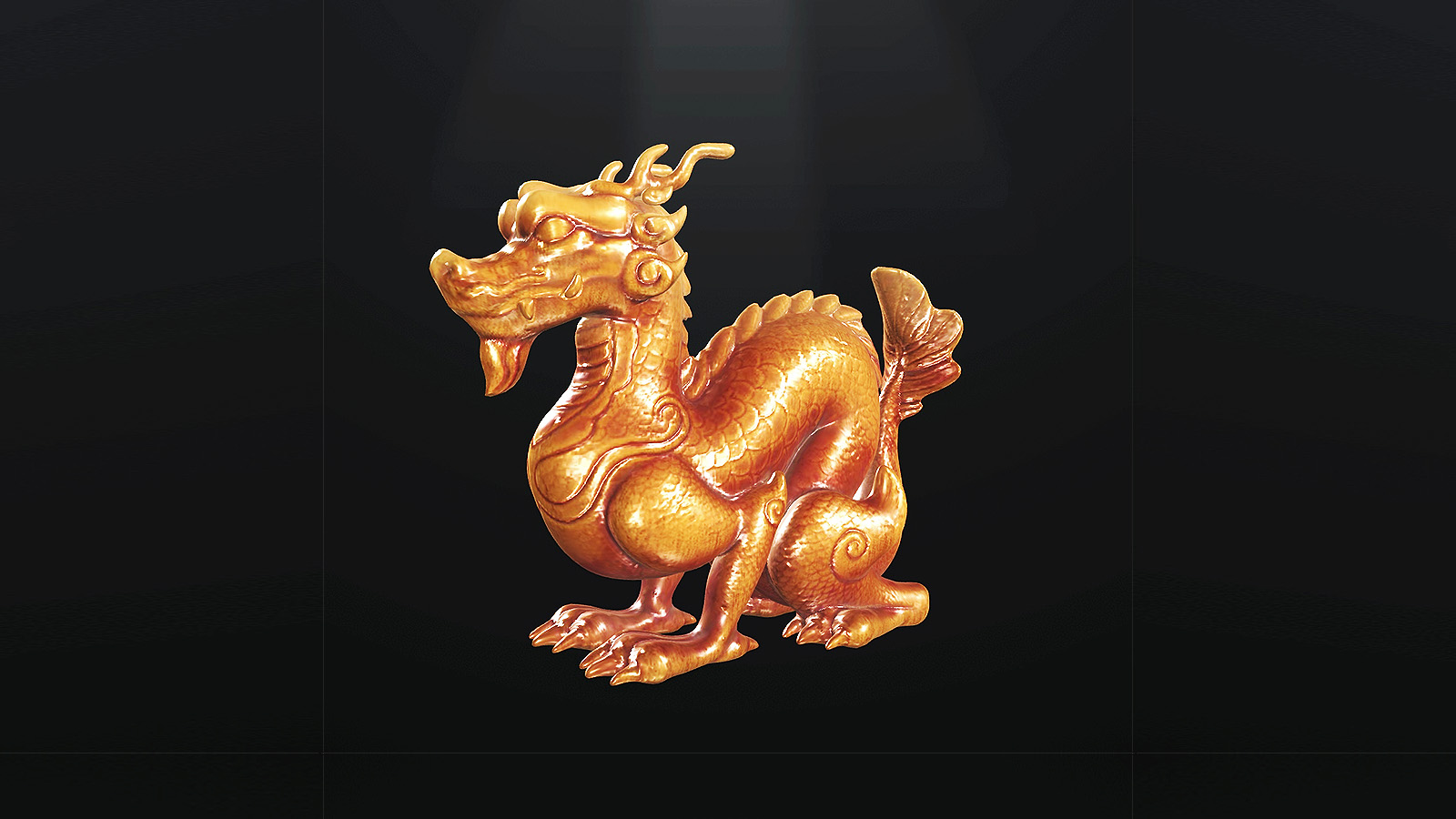Visitor numbers to the most famous museums in the world dropped by as much as 77 percent over the last two years, increasing the urgency for the cultural sector to diversify its revenue streams. While museum attendance will recover somewhat as restrictions ease, figures may never get back to pre-COVID norms because consumers want different experiences now.
In order to survive in the long-term, museums have to respond to an increased demand and appetite for digital content — a shift in consumer desire that is here to stay. One emerging technology museums are exploring to meet this demand and create more sustainable revenue streams is “digital collectibles.” These are a type of digital merchandise similar to NFTs, but with some key differences, which, in many ways, make them more appealing.
Digital collectibles vs. NFTs

A digital collectible released by Anwei Museum on Alipay. Image: Sohu
China is leading the way in digital collectibles, which have become an important component in licensing and retail programs for many Chinese museums. By transforming museum collections into digital merchandise, these organizations are decentralizing the world’s knowledge, making it more accessible and increasing new sources of income at the same time.
Digital collectibles are a type of digital merchandise created for personal collection. Each one features a specific artifact or artwork (or a single digital copy of it), is available in limited quantities, and has a unique serial number on a specific blockchain that cannot be tampered with, divided, or substituted for each other.
However, digital collectibles in the Chinese market have many key differences from NFTs. For example, cryptocurrencies are not used for transactions. Instead, collectibles are priced directly in Chinese yuan and transactions are made with popular non-crypto payment methods like bank cards, Alipay, and WeChat Pay.
Secondly, digital collectibles are digital merchandise based on a fixed retail price. Once digital collectibles are sold on a digital collectible platform in China, they cannot be used for resale purpose — digital collectibles are meant for personal collection, thus they are less speculative and therefore less “risky” in nature than their Western counterpart, the NFT.
For Western museums who are new to the world of NFTs or hesitant about them, digital collectibles can offer a more appealing and less risky entry point into this area, with the Chinese market being an excellent place to start.
Digital collectible programs in China

Last year, the Dunhuang Research Institute teamed up with Tencent to release 9,999 limited edition collectibles on the Traveling in Dunhuang WeChat Mini Program. Image: Tencent
Given their key differences from NFTs, it is no surprise that digital collectibles in the Chinese museum sector have taken off successfully with over 30 of the country’s top tier museums having actively participated in the market since May 2021. In that same period, more than 100 digital collectibles platforms have been established in China, with major platforms operated by large corporations such as Tencent, Alibaba, JD, and Visual China Group, catering to every niche and audience.
Some recent successes include digital collectibles featuring a highly prized artifact: the Bronze Sculpture of a Tiger Head, released by Beijing’s Poly Art Museum, and digital collectibles featuring mural art from Dunhuang, an ancient city and UNESCO World Heritage site, both released in January 2022.
The digital collectible of the Bronze Tiger Head was presented in the form of a high-resolution 3D model, which collectors could view in 360-degrees, accompanied by an evocative narrative carefully prepared by the museum. A sizeable, but limited, run of 20,000 units were issued at ¥29.9 each ($4.80), and sold out in seconds with sales totaling ¥598,000 ($96,000).

The Bronze Sculpture of a Tiger Head was minted by Beijing’s Poly Art Museum and offered as a digital collectible in January. Image: Poly Art Museum on WeChat
The five sets of digital collectibles we created with Dunhuang Inspiration launched on a pre-order basis on Tencent’s digital trading platform, Huanhe. Each design had 1,600 uniquely numbered units priced at ¥118 each ($19). With over 60,000 people reserving for pre-sale, all 8,000 copies sold out immediately after the official launch.
ARTiSTORY has since launched an additional series of digital collectibles for Dunhaung called “An Eternity — A Thousand Years in a Blink” with a platform developed by China’s pioneering tech company SenseTime. The digital collectibles bring fresh life to Dunhuang’s incredible murals by incorporating AI technology to reconstruct artwork from thousands of years ago, with contemporary re-interpretations of scenes from the murals created by an ARTiSTORY illustrator.
These examples demonstrate how museums can use digital collectibles to reach younger demographics, nurture an online following, boost brand awareness, and crucially, create much-needed new sources of income. With the market this buoyant in China, we expect to see more and more Western museums creating digital collectibles for this market as they offer more security and less risk than the NFT equivalent. In fact, China’s unique digital collectibles model could well point to the future of how the cultural sector — and others — engage with the emergence of NFTs globally.
Yizan He is the Founder and CEO of ARTiSTORY, an IP licensing firm working with some of the world’s leading museums, galleries, science centers and libraries. Yizan also serves as an investor and General Partner of SIPIC, a Singapore-based investment fund that specializes in art and cultural IP.



